Container Orchestration: Definition, Components, Working, Tools & Use Cases
A container runtime is the execution layer that turns container images into isolated processes on a host. This article talks about what a container runtime is, how it is defined in modern container platforms, and how it works under the hood. It compares a container runtime vs container engine, outlines the main types of runtimes (including runc and crun), and shows how runtimes integrate with Kubernetes via the Container Runtime Interface (CRI). You’ll also see the difference between image scanning and runtime security, key hardening best practices, and how OCI standards, registries, signatures, and SBOMs shape trusted runtime behavior.
What is a container runtime?
A container runtime is the software layer that takes a container image and runs it as an isolated container process on a host, managing the full container lifecycle from pulling and unpacking the image to configuring namespaces, cgroups, networking, and storage, starting the process, and cleaning up when it exits. Tools like Docker Engine, containerd, and other high-level container runtimes act as or use a low-level container runtime to actually run containers, while platforms such as a Kubernetes cluster use the Container Runtime Interface (CRI) to communicate with these runtimes and coordinate container orchestration across nodes.
How is a container runtime defined in modern container platforms?
A container runtime in modern platforms is the execution layer that a container engine relies on to make containers from images and run them as isolated processes on the host, across both Linux and Windows containers. A container is a lightweight, isolated environment that packages an application and its dependencies while sharing the host operating system kernel.
Here are the keyways it is defined in this context:
- It exposes a stable API that the container engine uses instead of managing low-level OS details directly.
- It converts a container image into a runnable filesystem and processes, effectively making containers on demand.
- It configures isolation primitives (namespaces, cgroups, filesystem, networking) for Linux and Windows containers where supported.
- It reports container state (starting, running, stopped) back to the engine or orchestrator for scheduling and health decisions.
- It ensures consistent runtime behavior across different hosts so higher-level platforms can treat containers as portable units of computer.
What is the difference between a container runtime and a container engine?
A container runtime is the low-level software that actually executes containers and enforces isolation, while a container engine is the higher-level platform that provides full container management around that runtime; this container runtime vs Container Engine distinction is fundamental to how modern platforms are designed.
How does a container runtime work?
A container runtime is the software package on each host that performs the actual execution and management of containers. In modern container environments, it handles Image Pulling from registries, Image Unpacking into a runnable filesystem, and continuous Container Lifecycle operations so workloads run in consistent OS isolation across hosts.
Here is how a container runtime works in practice:
- Receives a run request through an API
It is called by a container engine or Kubernetes CRI and is asked to create or stop each container on the node. - Pulls and unpacks the image
It performs Image Pulling of the required container image from registries , a read only layered package that includes the application, its dependencies, and base OS userland and then performs Image Unpacking into a root filesystem within the container that the runtime can mount and execute. - Sets up isolation and resources
It configures namespaces, cgroups, network, and storage so the container can only see its allowed view of the system, forming a secure runtime boundary. - Starts and monitors the main process
- It launches the container entrypoint, the default command defined in the image, keeps the process running as an isolated unit, and tracks basic container health and status.
- Cleans up on exit
It removes namespaces, unmounts filesystems, and frees resources so the container ecosystem on the host stays clean.
How do runtimes manage resource allocation and cleanup?
A container runtime is the software package on each host that allocates resources to every container and cleans them up when workloads stop, so you can execute containers and manage them safely over time.
Here is how runtimes manage resource allocation and cleanup in practice:
- Define and enforce limits per container
- The container runtime is a software layer that applies CPU, memory, and I O limits via cgroups so every container cannot starve other running applications. Cgroups, or control groups, are a Linux kernel feature that group processes together and enforce resource limits and priorities on them.
- Isolate containers from host and peers
As runtimes interact with the kernel, they use namespaces so resources visible within a container are scoped and protected from the host or other containers. - Expose usage through tools and APIs
Container runtime tools and a container engine that implements an API for container operations read cgroup stats to show per-container usage and support best practices for tuning. - Tear down resources on exit
When a container stops, the runtime deletes its cgroups, namespaces, and temporary data, allowing various container runtimes to reuse host resources without manual cleanup.
What are the main types of container runtimes?
Container runtimes come in several forms, each designed to handle different layers of container execution—from interacting directly with the OS to integrating with Kubernetes or providing stronger isolation. The list of container runtime options below groups the main Container runtime types used in practice and gives you concrete Container Runtime Examples that show how containers are created, launched, secured, and managed across modern platforms.
Below are the core types used in today’s container ecosystems:
1. Low-level OCI process runtimes
Lightweight runtimes such as runc and crun that work closest to the kernel. They configure namespaces, cgroups, mounts, and then launch the container process. Higher-level engines depend on them.
2. Daemon-based host runtimes and container engines
Full-service runtimes like containerd and Docker Engine that manage images, container lifecycle, storage, and host-level operations for multiple containers.
3. Kubernetes-aligned CRI runtimes
Runtimes like containerd and CRI-O built for the Kubernetes Container Runtime Interface, handling pods, images, networking, and security for cluster workloads.
4. Sandboxed or extra-isolation runtimes
Security-focused runtimes such as Kata Containers and gVisor, which place containers inside sandboxes or lightweight VMs to enforce stronger isolation and protect the host.
What is the difference between low-level runtimes like runc and crun?
Low-level runtimes like runc (often written as runC) and crun both implement the same OCI standard, but they differ in implementation language, performance profile, and how they fit into modern container platforms, which affects how operators choose between them.
How do container runtimes integrate with Kubernetes and the Container Runtime Interface?
In Kubernetes, the way a container runtime in Kubernetes integrates with the cluster is through the Kubernetes Container Runtime Interface (CRI), a gRPC API that lets the kubelet talk to any runtime that supports CRI in a consistent way, so Kubernetes is not tied to one runtime or vendor-specific container technology.
Here is how that integration works:
- CRI as the contract
The Container Runtime Interface defines image and container services; container runtimes must implement these so the kubelet can pull images, create Pods, and provide container processes without a runtime-specific plugin. - From Pod spec to containers
When you apply a Pod, the kubelet turns it into CRI calls; the runtime is asked to create a sandbox and containers, wiring up namespaces, networking, and storage and returning references to the container (IDs, status). - Security and isolation
Kubernetes sets policy (Pod security, network policy), but securing container runtimes depends on the runtime enforcing isolation, syscalls, and user IDs; runtimes ensure the low-level execution matches the Pod’s security context. - Swappable runtimes over time
Because CRI decouples Kubernetes from any single engine, you can replace one runtime with another CRI-compatible option, reflecting the history of container runtimes moving from tightly coupled to pluggable designs.
What is the difference between image scanning and container runtime security?
Image scanning and container runtime security solve related but different problems: one checks whether a container image is safe before deployment, and the other monitors what a running container actually does once a container runtime is a software layer executing it. You need both to build a complete defense around modern container runtimes explained.
What are best practices for securing container runtimes?
Best practices for securing container runtimes focus on hardening the host, locking down how containers execute, and continuously monitoring behavior so runtimes ensure workloads stay within strict security boundaries.
Key practices include:
- Harden the host first
Run runtimes only on minimal, patched hosts, disable unused services, and restrict direct shell access so a compromised container has fewer ways to pivot.
- Run containers as non-root
Enforce non-root users, drop Linux capabilities, and avoid privileged containers so the runtime reduces blast radius if an application is compromised.
- Use strong isolation profiles
Apply seccomp, AppArmor/SELinux, read-only filesystems, and no-new-privileges flags so runtimes ensure only the minimum syscalls and file writes are allowed.
- Pin and validate images
Use signed images, digest-based pulls, and a private registry; block untrusted sources so runtimes only start verified workloads.
- Limit network and storage access
Lock down container egress, avoid hostPath mounts, and scope volumes tightly to prevent data exfiltration and lateral movement.
- Control the runtime surface area
Disable unused runtime features, restrict access to the container socket (like /var/run/docker.sock or CRI endpoints), and use RBAC around orchestration.
- Monitor runtime behavior
Continuously inspect processes, syscalls, and network flows; alert or kill containers on policy violations to catch attacks that bypass image scanning.
- Standardize configuration and policies
Use templates and policy-as-code so all environments apply the same runtime hardening, making it easier for runtimes to ensure consistent enforcement across clusters and hosts.
How do OCI specifications and standards shape container runtimes?
Open Container Initiative (OCI) specifications shape container runtimes by standardizing how images are built, stored, and executed, so different tools in the container ecosystem interoperate reliably.
Here are the key ways OCI standards influence container runtimes:
- The OCI Image Specification defines how a container image is structured (layers, config, manifests), so any OCI-compliant runtime knows exactly how to unpack and start it.
- The OCI Runtime Specification defines how to turn an unpacked image into a running container (process, namespaces, cgroups, mounts), so runtimes follow the same execution model and can be swapped without changing applications.
- OCI distribution semantics define how images are referenced and pulled (tags, digests), letting runtimes fetch and verify images in a consistent, secure way.
How do registries, signatures and SBOMs interact with runtimes at pull and start time?
How do registries, signatures and SBOMs interact with runtimes at pull and start time?Registries, signatures, and SBOMs act as the trust and transparency layer around container images, controlling what a container runtime is allowed to pull and what it is allowed to start.
Here is how they interact with runtimes at pull and start time:
- At pull time – registry and signatures
When the runtime (or its engine) pulls an image from a container registry, it requests a tag or digest, authenticates, and downloads the manifest and layers. If image signatures are enforced, the platform verifies that the digest is signed by a trusted key before the pull is accepted, so the runtime only stores images with verified origin and integrity. - At pull time – registry and SBOMs
Registries can attach SBOMs as OCI artifacts to the same image digest. An SBOM (software bill of materials) is a detailed inventory of all components in the image. As the image is pulled, the platform can also fetch the SBOM and feed it into scanners or policy engines. - exposing exactly which packages and components the runtime is about to execute.
- At start time – policy, signatures, and SBOMs
When a container is started, the runtime (or an admission/policy layer in front of it) rechecks the image digest, validates the signature, and evaluates SBOM-based rules (for example, CVE thresholds or banned components). Only if these checks pass does the runtime unpack the image, set up isolation, and launch the process.
FAQ’s
Q1. Is Kubernetes a container runtime?
Ans: No, Kubernetes is not a container runtime. It is a container orchestration platform that schedules and manages pods across nodes, while relying on an underlying container runtime (such as containerd or CRI-O) via the Container Runtime Interface (CRI) to actually run the containers.
Q2. Is Docker a container runtime interface?
Ans: No, Docker is not a Container Runtime Interface (CRI). Docker is a container engine that builds, runs, and manages containers, while the CRI is a Kubernetes API layer used to talk to container runtimes such as containerd or CRI-O.
Q3.Can OpenShift run without Kubernetes?
Ans: No. OpenShift is built on Kubernetes, so it cannot run without Kubernetes; it is essentially a Kubernetes distribution with additional enterprise features layered on top.
Q4. What is a container runtime in Kubernetes?
Ans: A container runtime in Kubernetes is the software on each node (such as containerd or CRI-O) that the kubelet uses via the Container Runtime Interface (CRI) to pull images, create containers, and manage their lifecycle.
Q5. Which container runtime should I use for Kubernetes?
Ans: For most clusters, containerd or CRI-O are recommended, because they are CRI-compliant, optimized for Kubernetes, and widely supported by managed Kubernetes services and tooling.
Q6. Can I use Docker as a container runtime in Kubernetes?
Ans: Newer Kubernetes versions no longer integrate directly with Docker Engine, but you can still run Docker-built images by using a CRI-compatible runtime like containerd that understands standard OCI images.
Q7. What is the difference between a container runtime and a container orchestrator?
Ans: A container runtime runs individual containers on a node, while a container orchestrator such as Kubernetes schedules, scales, and manages those containers across many nodes in a cluster.
Q8. Do all containers on a node have to use the same runtime?
Ans: Yes. On a given node, the kubelet is configured to talk to one container runtime, and all Pods scheduled to that node run through that same runtime.






.webp)
.webp)
.webp)







%20(1).png)



